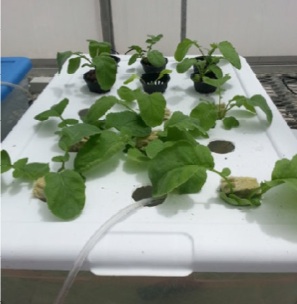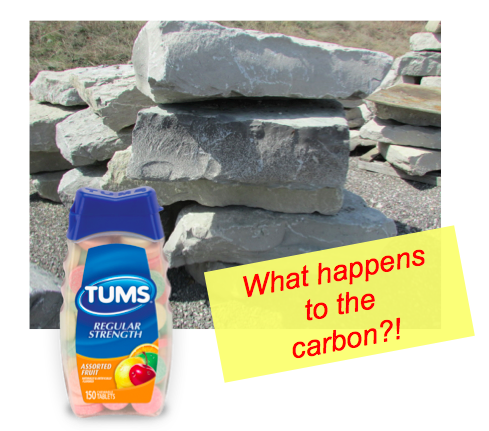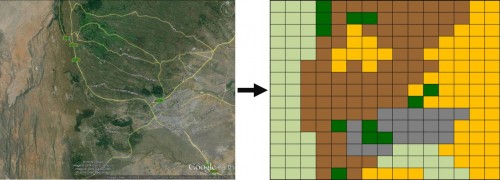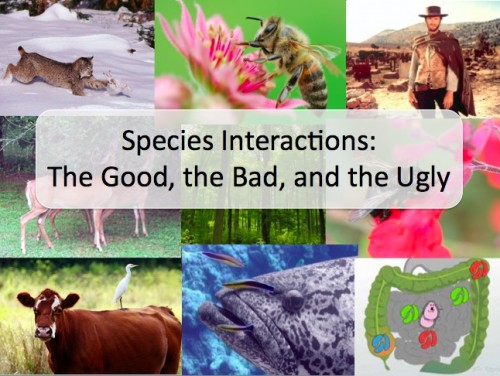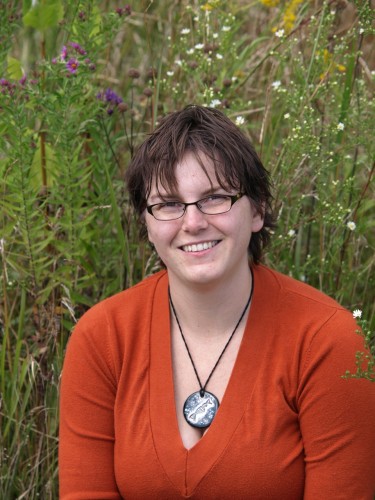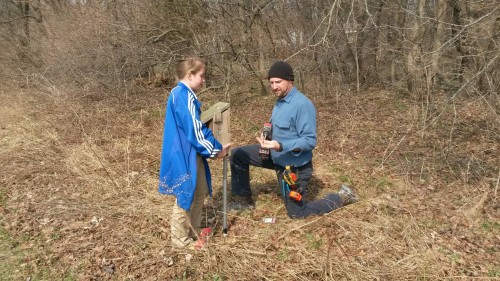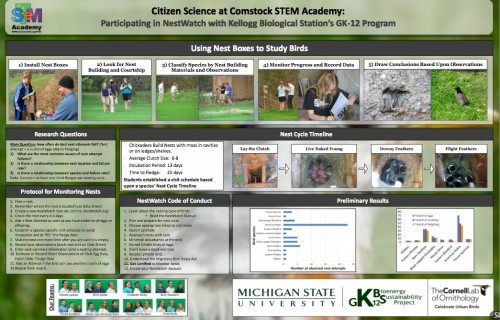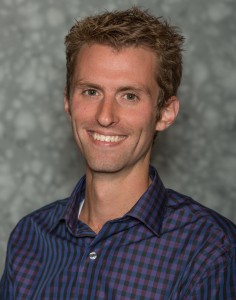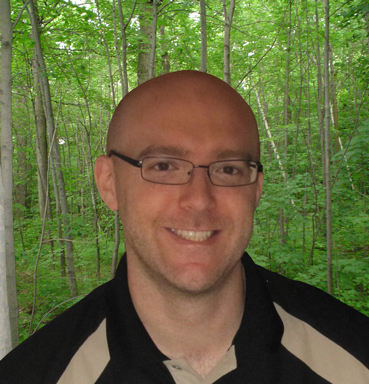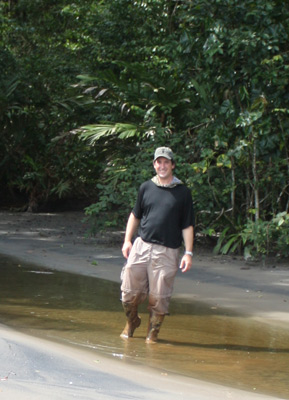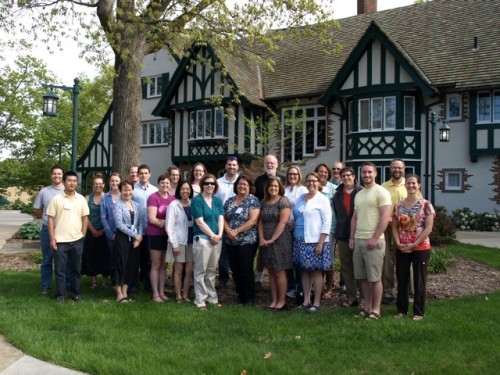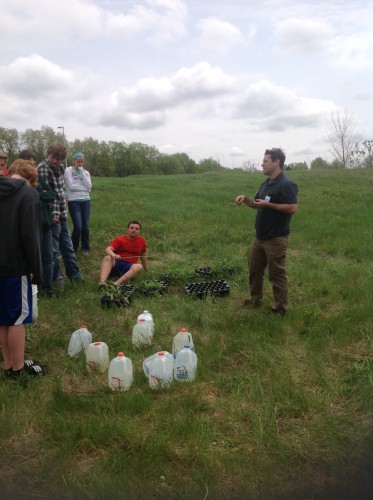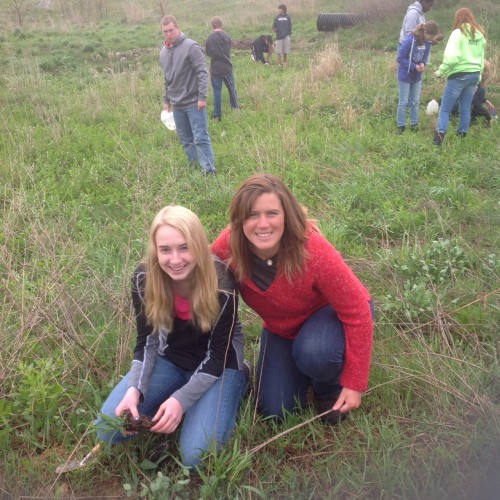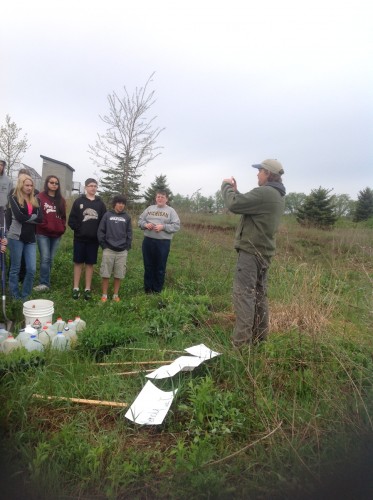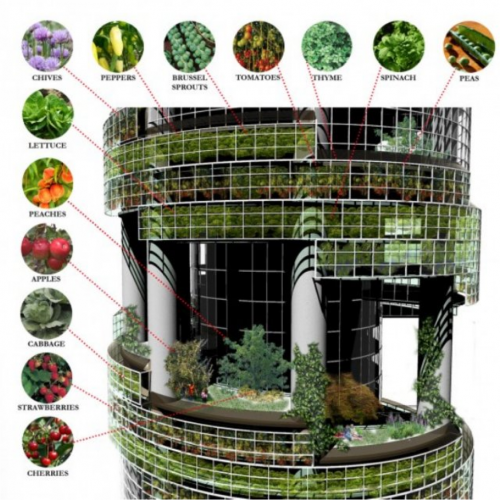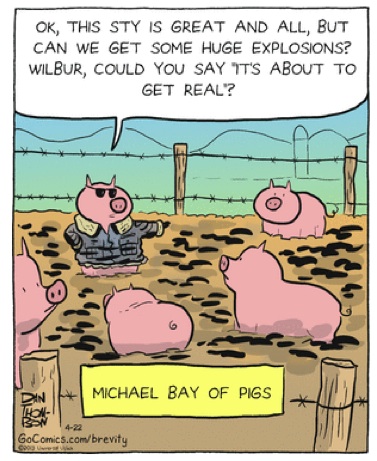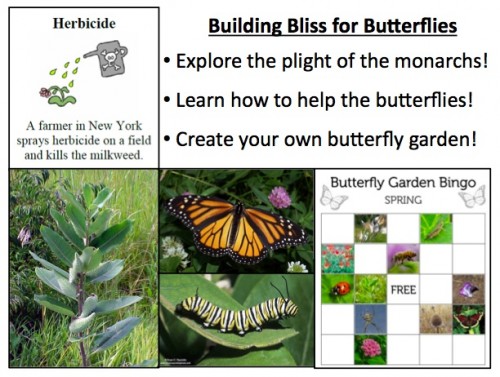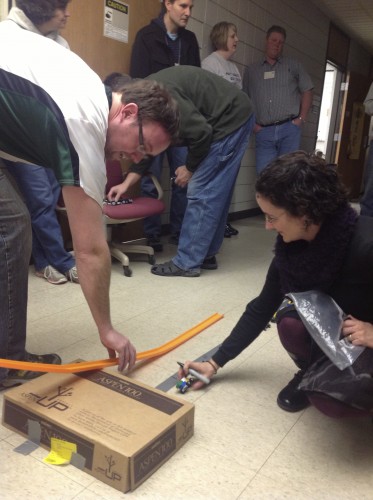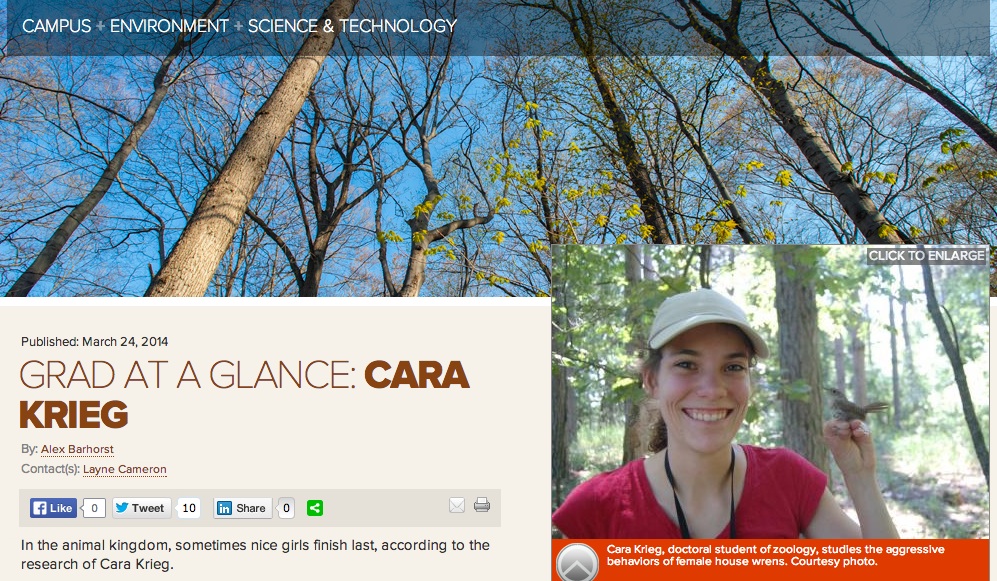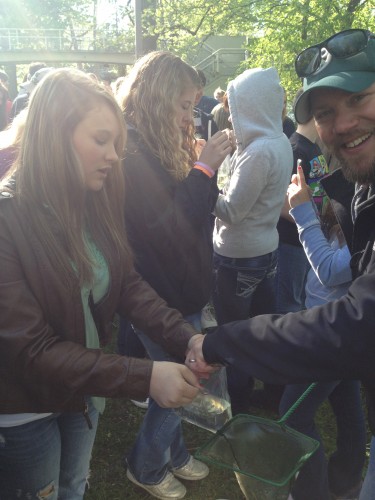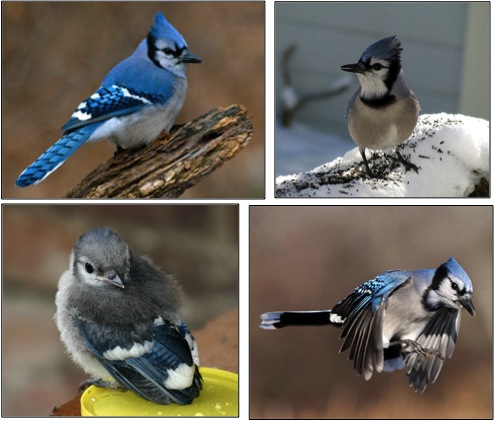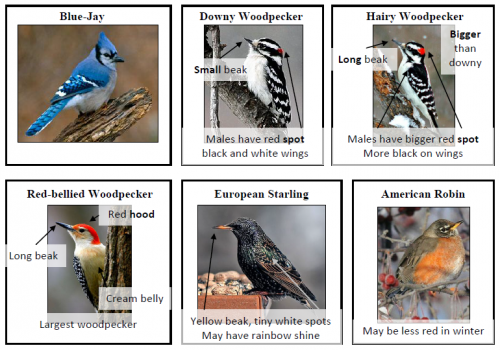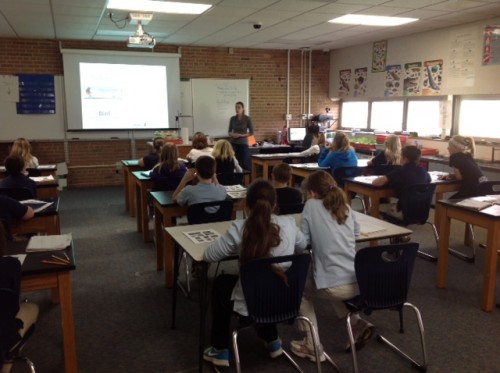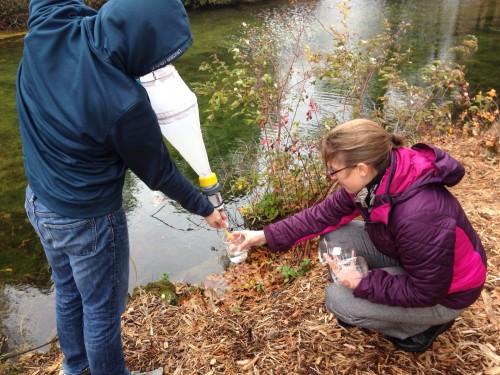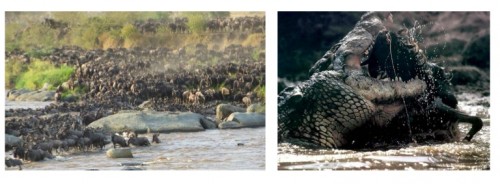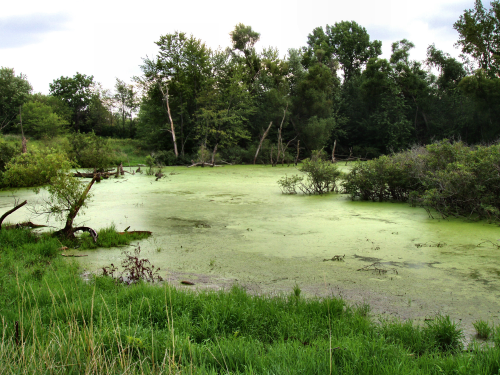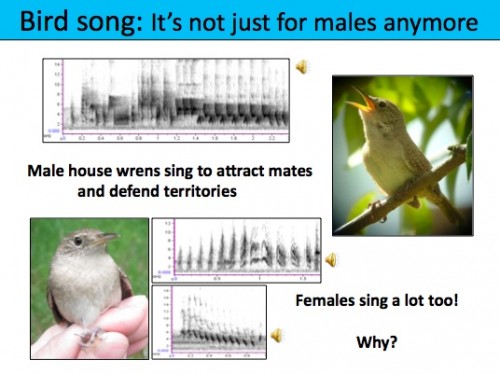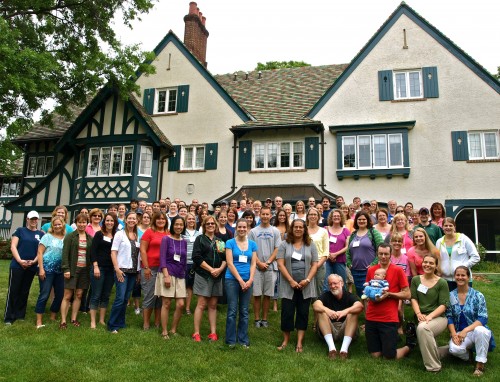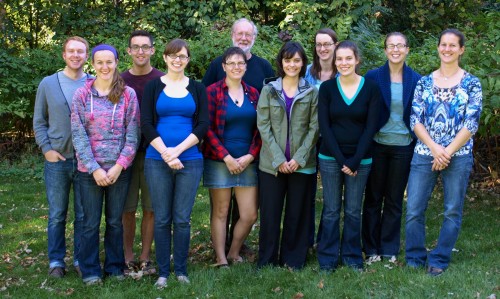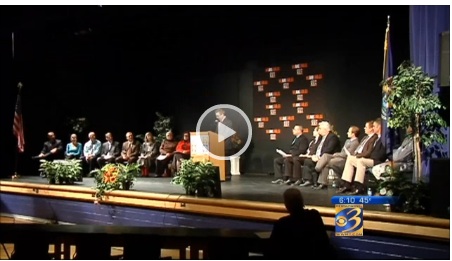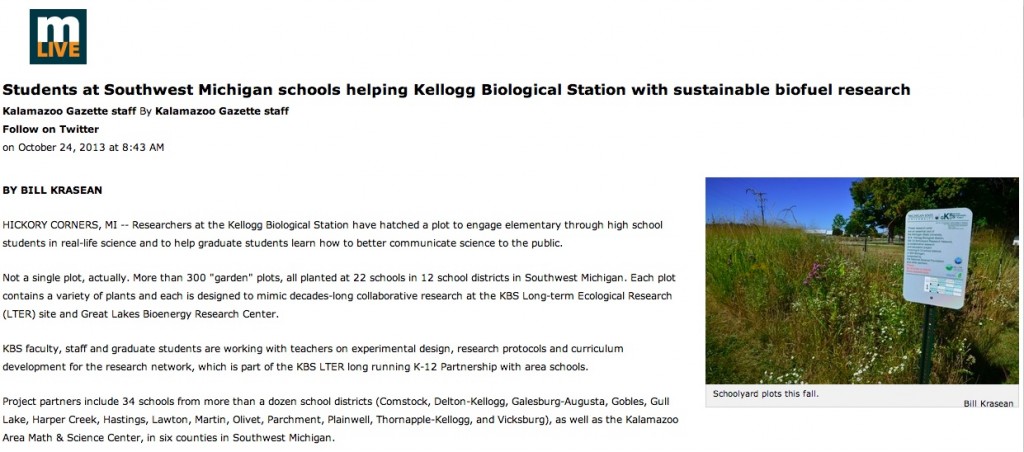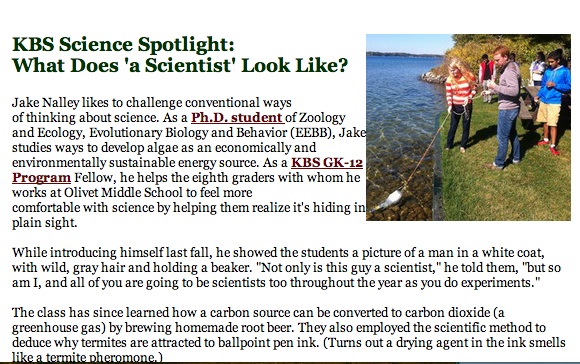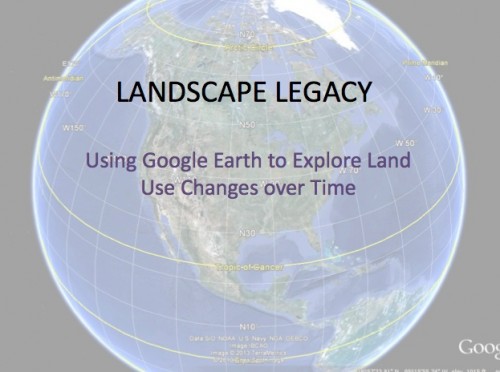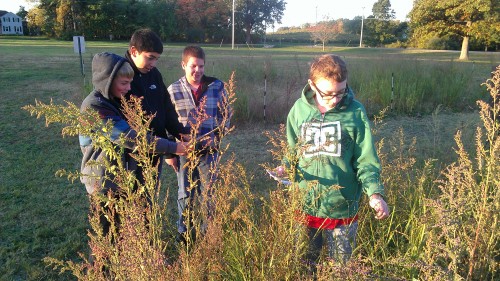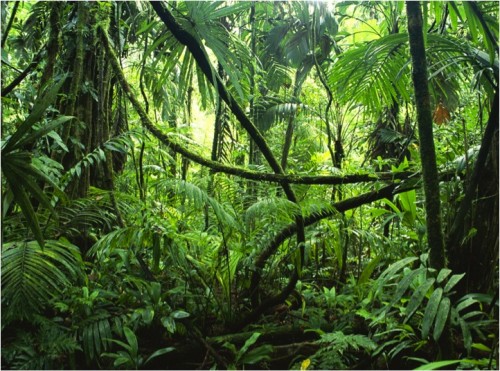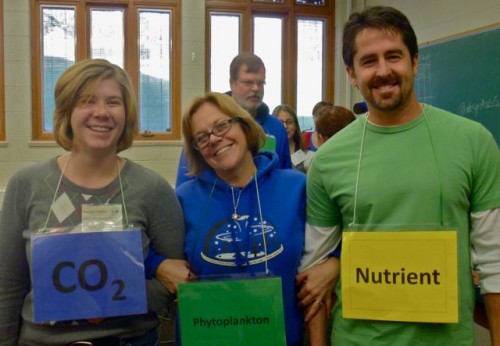
The KBS K-12 partnership cordially invites you to:
STEM: Environmental Engineering for Sustainability
Wednesday, April 23 from 8 AM to 4 PM.
Below you’ll find our agenda for the day as well as details on our concurrent sessions. Events will continue to update as we develop content. Please rsvp to Sarah at bodbyl@msu.edu if you plan to attend. We look forward to seeing you!
Agenda
8:00 AM Breakfast, Announcements, and Introductions
8:30 AM Speaker: Dawn Reinhold (Assistant Professor of Biosystems and Agricultural Engineering at MSU) – Auditorium
9:30 AM Concurrent Session Teasers
9:45 AM Concurrent Session 1
MS/HS: Bread Making as Biological Engineering (Kolonich, Lee, Doherty and Anderson) Terrace Room
EL (elem): Bringing Biology to Urban Design: All aboard the Poop Train! (Jake Nalley and Sara Garnett) Stack 140
MS/HS: The Pig Bang Theory: The Implications of Ignoring Evolution (Amanda Charbonneau and Sarah Jones) Stack 139
MS/HS: Connecting Landscapes in a Changing World (Emily Dittmar and Dani Fegan) Stack 145
11:00 AM Break
11:15 AM Plenary with Doug Landis (Professor and Chair of MSU Entomology Department)
12:30 PM Lunch at McCrary
1:30 PM Concurrent Session 2
EL: Building Bliss for Butterflies (Dustin Kincaid, Susan Magnoli, Cara Krieg) Stack 141
MS/HS: Biofuels, Biology, and NGSS (Joyce Parker – GLBRC) Terrace Room
MS/HS: The Pig Bang Theory: The Implications of Ignoring Evolution (Amanda Charbonneau and Sarah Jones) Stack 139
MS/HS: Connecting Landscapes in a Changing World (Emily Dittmar and Dani Fegan) Stack 145
2:45 PM State of the BEST plots and educational opportunities (Auditorium)
3:15 PM Small Group Work by District and Evaluation (Auditorium)
4:00 PM Teacher Advisory Committee Meeting and Adjourn
Concurrent Session Abstracts
Building Bliss for Butterflies
Target Audience: Elementary School Educators
Presenter(s): GK-12 Fellows Cara Krieg, Susan Magnoli, and Dustin Kincaid.
Did you know that there are more than 50 species and subspecies of threatened butterflies and moths in Michigan? Unfortunately, populations of these striking and important creatures are in decline throughout the world. Luckily, you and your students can help by creating habitat for butterflies in your schoolyard. In addition to providing critical habitat, a butterfly garden can serve as an excellent educational tool for you and your elementary students. In this session we’ll explore reasons why one butterfly, the Monarch, is disappearing using an interactive game. Then we will share tips and seeds for building habitat for butterflies in your schoolyard. We will also introduce you to several activities you can use with your students in and around these beautiful spaces.
Biofuels, Biology, and NGSS
Target Audience: Middle and High School Educators
Presenter(s): Joyce Parker – GLBRC.
Cost-effective and sustainable production of the biofuel, ethanol, from plant cellulose is the goal of the Great Lakes Biofuels Research Center. How can we use this authentic modern science to illustrate required content? How can we give students opportunities to practice science while learning this content? What do activities that support the Next Generation Science Standards look like? We will answer these questions by exploring new hands-on, minds-on curriculum materials. Bread Making as Biological Engineering Angela Kolonich, May Lee, Jennifer Doherty and Andy Anderson Rising bread is a little ecosystem that is affected by many factors, including temperature, amount of sugar, type of yeast, and bread flavorings. This presents an engineering design challenge: How do your ingredients affect when you need to start making your bread in order to eat it with dinner? In this session we will use this engineering challenge as a way of exploring an interesting biological system and discuss how to incorporate the engineering design process and engineering practices into life science classrooms.
Bread Making as Biological Engineering
Target Audience: Middle and High School Educators
Presenter(s): Angela Kolonich, May Lee, Jennifer Doherty and Andy Anderson
Rising bread is a little ecosystem that is affected by many factors, including temperature, amount of sugar, type of yeast, and bread flavorings. This presents an engineering design challenge: How do your ingredients affect when you need to start making your bread in order to eat it with dinner? In this session we will use this engineering challenge as a way of exploring an interesting biological system and discuss how to incorporate the engineering design process and engineering practices into life science classrooms.
The Pig Bang Theory, the implications of ignoring evolution
Target Audience: Middle and High School Educators
Presenter(s): Amanda Charbonneau and Sarah Jones
What do pest-resistant corn, antibiotic resistance and pig farm explosions have in common? Sometimes nature fights back against our attempts at environmental engineering, and we must change tactics accordingly. Humans spend huge amounts of money and time to improve crops or domestic animals, and increasingly, we are finding that evolution can creatively side-step our intended goals. For instance, pest-resistant crops have resulted in new breeds of insects that are immune to our poisons. Modern farmers must find ways to prevent not only damage to their current crops, but evolution in pest populations that will eat their future fields. This workshop will focus on how evolution can hamper our efforts, and have explosive consequences. Students will learn how evolution happens in pest populations and have an opportunity to think critically about a current problem in agriculture using claims, evidence, and reasoning.
Bringing Biology to Urban Design: All Aboard the Poop Train!
Target Audience: Elementary Educators
Presenter(s): Sara Garnett and Jakob Nalley
The biological structures that make up our natural world are engineering wonders. From trees that reach several stories in height with such an extensive foundations that they can withstand hurricane force winds to aerodynamic body types to reduce drag and increase speed. These biological systems are inspiring the urban landscape, like stimulating the construction of skyscrapers, underground subway systems, efficient and interconnected roadway infrastructures and more. But as urban settings become increasingly populated these cities have begun to think more and more about a crucial component of their future feasibility and survival: sustainability. Within this workshop we will delve into the idea of urban sustainability through biologically inspired urban design. We will investigate some currently developed techniques that cities are already investing in, from green rooftops to harnessing the power of algae to heat, cool, and generate electricity within buildings. We will then discuss a number of technologies that are on the urban landscape’s horizon, such as photosynthesizing street lamps, industrial scale urban farming, and tapping into our own human waste to generate biodiesel. All aboard the poop train!
Connecting Landscapes in a Changing World
Target Audience: Middle and High School Educators
Presenter(s): Dani Fegan and Emily Dittmar
Changes to landscapes as a result of human activities infringe on the natural habitats of many organisms, often fragmenting their habitat into smaller, unconnected patches. Conserving habitat patches and creating corridors between them are ways to connect and facilitate movement of organisms between patches in order to reduce the negative effects of habitat fragmentation. However, organisms have different requirements for movement, so corridors are not a “one-size-fits-all” fix. To get the biggest conservation ‘bang’ for our buck it is important to understand the biological needs of various organisms so we can design protected landscapes accordingly. The current lesson will introduce students to the biological effects of habitat size and edges on different organisms and encourage them to think about how best to conserve biodiversity under different scenarios. A case study involving wind-dispersed plant species will be explored, and students will be asked to ‘design’ their own seeds to disperse across different types of landscapes.
Redesigning Agricultural Landscapes for Multiple Ecosystem Services
Douglas A. Landis, Professor of Entomology, Department of Entomology and Great Lakes Bioenergy Research Center, MSU
Globally, agricultural landscapes support plant, animal and microbial communities that provide humans with a variety of ecosystem services. In the past, agricultural science focused almost exclusively on maximizing the provisioning services of agriculture, i.e. increasing the yield of food, feed and fiber. More recently, the critical role of supporting services such as nutrient cycling and soil formation, regulating services including pest suppression and pollination, and cultural services including the recreational and aesthetic qualities of landscapes have become increasingly evident. To sustainably produce food and energy for a rapidly expanding human population, scientists and land managers will need to think creatively about how to maximize the mixture of ecosystem services we can derive from agricultural landscapes. It is likely that future landscapes will need to be explicitly designed and managed to optimize the blend of ecosystem services that each can supply. The advent of cellulosic bioenergy cropping systems provides an opportunity to rethink and potentially redesign agricultural landscapes in the Midwestern US. Increasingly, studies suggest that perennial and polycultural bioenergy crops can increase agricultural landscape diversity yielding positive impacts on biodiversity and ecosystem services, including pollination, biological pest suppression, water quality, and greenhouse gas mitigation. How society chooses to value the complement of ecosystem services derived from agriculture will ultimately determine the structure of these working landscapes.
Participant List
Email Sarah Bodbyl (bodbyl@msu.edu) if you would like to be added to this list.
Comstock: Laurie Anderson, Shirley Gilland, Jan Kiino, Emmy Kimmer, Maren Tillman, Kim Sandefur, Jenny York, Caleb Fisher, Canaan Groff, Mary Grintals, Mark Shenefield (11)
Delton-Kellogg: Connie High, Dale Grimes (2)
Galesburg-Augusta: Mary Sutter Moreland (1)
Gobles:
Gull Lake: Kim Clancy, Michelle Mahar, Blair Rogers, Ashley Carroll, Margaret Ells, Jennifer Boyle, Laurie Klock, Beth Keller (8)
Harper Creek: Meredith Hawkins, Sandy Erwin, Alissa Renner, Thom Shipley, Amy Smith, Steve Barry, Mason Converse, Erik Crooks, Joe Yurisich (9)
Hastings: Marty Buehler (1)
Kalamazoo Area Math Science Center: Cheryl Hach, Chris Chopp (2)
Lawton: Marcia Angle, Dennis VanWeelden (2)
Martin: Rob Robrahn (1)
Olivet: Marie Toburen, Michael Boehmer, Charles Bucienski, Terri Morton, Elliot London, Russ Stolberg (6)
Parchment: Jodie Lugar-McManus (1)
Plainwell: Lisa Wininger, Marty Green, Noel Muselin, Maggie McGregor, Jackie Warners (5)
Thornapple-Kellogg: Jamie Bowman, Shaun Davis, Mike Rynearson, Beth Bauer, Aubrey Hendricks (5)
Vicksburg: Lisa Harbour, Liz Ratashak, David Nette (3)
KBS & Staff: Tom Getty, Andy Anderson, Jennifer Doherty, Sarah Bodbyl, Cara Krieg, Dustin Kincaid, Jake Nalley, Sara Garnett, Amanda Charbonneau, Emily Dittmar, Dani Fegan, Sarah Jones, Susan Magnoli, Joyce Parker, May Lee, Angela Kolonich, Dawn Reinhold, Doug Landis (18)
WMU Evaluation Staff: Bob Ruhf, Eva (2)
T (57), SS (20)
77 total

